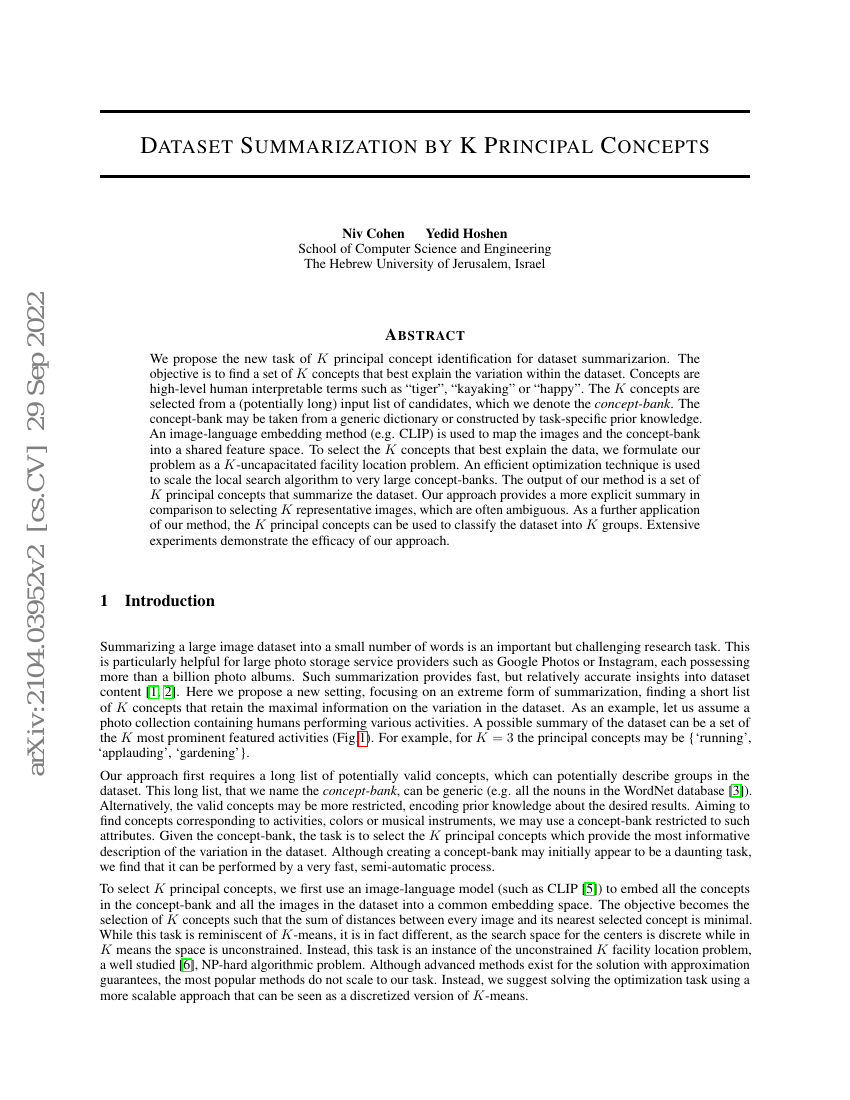Command Palette
Search for a command to run...
Niv Cohen Yedid Hoshen

Abstract
We propose the new task of K principal concept identification for dataset summarizarion. The objective is to find a set of K concepts that best explain the variation within the dataset. Concepts are high-level human interpretable terms such as "tiger", "kayaking" or "happy". The K concepts are selected from a (potentially long) input list of candidates, which we denote the concept-bank. The concept-bank may be taken from a generic dictionary or constructed by task-specific prior knowledge. An image-language embedding method (e.g. CLIP) is used to map the images and the concept-bank into a shared feature space. To select the K concepts that best explain the data, we formulate our problem as a K-uncapacitated facility location problem. An efficient optimization technique is used to scale the local search algorithm to very large concept-banks. The output of our method is a set of K principal concepts that summarize the dataset. Our approach provides a more explicit summary in comparison to selecting K representative images, which are often ambiguous. As a further application of our method, the K principal concepts can be used to classify the dataset into K groups. Extensive experiments demonstrate the efficacy of our approach.
Benchmarks
| Benchmark | Methodology | Metrics |
|---|---|---|
| image-clustering-on-cifar-10 | Single-Noun Prior | ARI: 0.702 Accuracy: 0.853 Backbone: ViT-B-32 NMI: 0.731 Train set: Train+Test |
| image-clustering-on-imagenet-100 | Single-Noun Prior | ACCURACY: 0.731 ARI: 0.628 NMI: 0.805 |
| image-clustering-on-imagenet-200 | Single-Noun Prior | - |
| image-clustering-on-imagenet-50-1 | Single-Noun Prior | ACCURACY: 0.827 ARI: 0.744 NMI: 0.847 |
Build AI with AI
From idea to launch — accelerate your AI development with free AI co-coding, out-of-the-box environment and best price of GPUs.